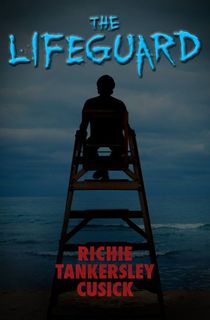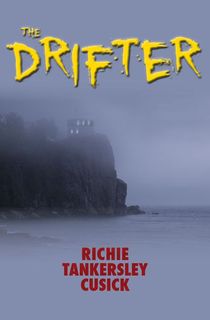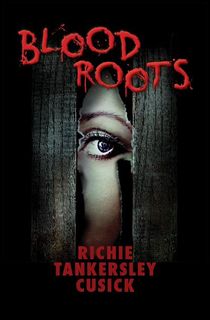Richie Tankersley Cusick was born in New Orleans, Louisiana on April Fool's Day.
She is an only child, so she started writing from her imagination at an early age. Oftentimes, she pulled from the bayou’s many ruined mansions, several ghostly encounters in her home, and moss-draped trees.
Some of her fondest memories are from living in the small town of Barataria, where folktales were all around her.
Cusick attended the University of Southwestern Louisiana (now called UL Lafayette) in Lafayette (the Cajun capital of the world), where she graduated with a BA in English and a minor in English history.
She continues to keep many non-fiction books and paranormal books at her house and enjoys reading them and listening to film soundtracks for inspiration.
“I always research my books,” Cusick remarks. "I mean, I really research my books, and I just loved it. I just loved the feel of it and the descriptions and all this kind of stuff.”
Cusick often looks up floor plans for homes or maps to towns to influence her writing, so she can steep in each setting as much as possible.
After she graduated from college, she moved to Kansas City, where she worked as a writer at Hallmark Greeting Cards for nine years. Her house was inhabited by a ghost again.
Upon publication of her first book—Evil on the Bayou—she left Hallmark and began writing books full-time.
Cusick became the bestselling young adult author of over 25 books, including two adult horror titles, Scarecrow and Blood Roots. Her popularity grew at the height of the horror/YA boom in the late '80s/early '90s, particularly with books like Lifeguard, Trick or Treat, and Teacher's Pet, just to name a few, allowing her to keep company on the bestseller paperback lists with the likes of R.L. Stine and Christopher Pike.
Her fan base expanded about the time she changed publishers to Archway/Pocket Books, with titles like Vampire and Someone at the Door. And, of course, many ‘90s teens also remember her work writing novelizations from the TV series Buffy the Vampire Slayer.
Richie now lives in North Carolina and is working on a new novel in between dog and cat sitting and walking jobs. She typically writes her books at a haunted antique roll top desk, which was once in the possession of a funeral director.
We spoke to her on the phone about the wild censoring of the ‘90s and ‘90s Scholastic books, some of her favorite film soundtracks, and reflections on a few favorite characters from her books.

Evil on the Bayou
When asked about her first horror book, Evil on the Bayou, it doesn’t take long until Cusick remarks about the classic cover where a girl is being attacked by snakes: “I really hate snakes,” she laughs.
Cusick was very influenced by the abandoned mansions in the bayous from her time living in the South, and as a first novella, Evil on the Bayou has a strong emotional tug. It's one of the first Cusick books to be grounded by a believable female protagonist.
Our heroine, Meg Daton, agrees to look after Aunt Belle as the old woman tries to recover from a stroke. Meg begins to unravel a mysterious death in the past, and discovers how Aunt Belle’s doctor is implicated.
Cusick did move back home to take care of her mother in real life, so some of this story was partially influenced by that.
For Cusick’s first four books after Evil on the Bayou, she was often given a marketing tip or sales sheet for potential buyers from her publisher, and they pre-selected substantial things like the names of her books and even sometimes the cover art. Cusick enjoyed her later books, where she had more autonomy over her written work and could select the content as she saw fit.
Cusick prefers this way by a long shot, so she can tap into all her research materials at home.
“I have a huge reference library with ghosts and vampires and werewolves and all that, but I've always believed that anything is possible,” Cusick states. “And I believe in ghosts. I've had interactions with ghosts in my life in several houses.”

The Lifeguard
The Lifeguard is one of the more iconic Scholastic horror books from the ‘80s and ‘90s, and yet Cusick has mixed feelings, mostly about the original summer beefcake cover.
“I’m not sure what was happening with that cover or the title,” the author laughs. “The title sort of would have spoiled who the killer is in that story, so I included three lifeguards in the book to throw people off.”
The Lifeguard story itself follows another teenage girl named Kelsey on a vacation. Kelsey begins watching the unraveling signs of a serial killer who drowned their victims in the ocean.
Written as a standalone novel, The Lifeguard was taken in by Scholastic and published as book #3 under the imprint Point Horror. The book received negative reviews from critics at the time, but in recent years has become a cult classic for nostalgic horror fans.
Cusick mostly laughs off the restrictions now.
“Well, it's funny because the more time that went by, the more freedom you had to write,” Cuscik remembers.
“And back then, young adult meant 14 and up or even 16 and up. And now tweens are reading Young Adult, and some of them are reading Adult. The age restrictions have changed a lot through the years, so kids are allowed a lot more freedom and are more open to topics now with books than they were when I was doing Lifeguard.”

Buffy the Vampire Slayer
When Cusick was asked to write a Buffy book, she was very excited.
However, the manner of writing horror books for teens and young adults was heavily censored at the time, which forced her to change a lot from Joss Whedon’s original movie script for the original 1992 movie starring Kristy Swanson as the eponymous Buffy Summers, a Valley Girl cheerleader who learns it is her fate to hunt vampires.
“Yeah, I heard that [Whedon] wasn't pleased with [the novelization] because he thought it had changed too much,” Cusick reflects.
“They tried to explain to him that I was really, really limited because of all this censorship that was going on, and I had to try to make it work without ruining his work, but also pleasing these censors. So I didn't blame him for his reaction at the time. I didn't blame him for being disappointed in the way it came out.”
That being said, Cusick was brought back to write another Buffy universe novelization for The Angel Chronicles, Vol. 2 in 1999, so it all worked out in the end.

The Drifter
The Drifter is a strange tale, and according to Cusick, she likes the characters overall. One of the more memorable characters in the tale speaks in rhyme.
The basic setup for this book is about a mother set on transforming Glanton House into an inn. Carolyn Baxter is distrustful of the handsome stranger Joss Whitcomb, who starts doing handyman work in exchange for room and board.
“That character spoke in rhyme, and then at the very end of the book, he speaks in rhyme, and it's sort of like the mystery solved or whatever, but readers just didn't know what that meant,” Cusick remarks. "It was like, ‘oh, was he the bad guy?’”
Joss also knows a lot about local legends, as Cusick was inspired by all her nonfiction books about local haunts from the South of the United States.
“I just loved the feel of researching floor plans for homes and local maps and the descriptions and all this kind of stuff for my horror books.”


Blood Roots
Blood Roots is one of Cusick’s favorite character-rich stories she has penned so far. It follows the character Olivia and her mother, who is slowly unraveling into madness.
Olivia’s childhood home is the grand plantation Devereaux House, which Olivia never truly knew. After Olivia’s mother dies, she wants to discover her family roots and travels to Devereaux House to meet her grandmother.
Olivia pretends to be a maid and works for her grandmother. As with all gothic horror and mystery novels, the plantation holds many secrets of lust and sacrilege.
Cusick dove into research for Blood Roots after being inspired by old plantation home photography.
“I often use a big research reference book called Ghosts Along the Mississippi, and inside is all of these black and white photographs of these plantation homes that are no longer beautiful,” notes Cusick.
“So it is like they're ghosts along the Mississippi, and I just love this book. I love the pictures, and they're just gray, misty, and spooky.”
Cusick was looking through that book like she normally does, and one image of an old abandoned mansion in particular led her to the idea of Blood Roots.
“Pictures inspire me. And so when I'm writing, I put up pictures of my characters, pictures of the house, and the house plans and all that,” Cusick states.

The House Next Door
The Ever After soundtrack proved to be an unlikely touchstone for Cusick during the writing of the haunted house book The House Next Door.
“I just love it,” Cusick remembers. “[The Ever After soundtrack] just captured this tragic love story, and I played that over and over and over again. Other soundtracks I listen to quite a bit while writing are Dead Souls and Woman in Black."
The House Next Door starts with a childish lark, when Emma Donovan bets her twin brother Charlie that she can spend the whole night at a spooky and abandoned house next door, and her role-playing of a past tragic romance that happened in that old creaky house.
Cusick writes the main character through a very relatable and heart-heavy lens throughout. It’s one of her most memorable late-career stories that mixes romance and the paranormal in a hallucinatory way.



